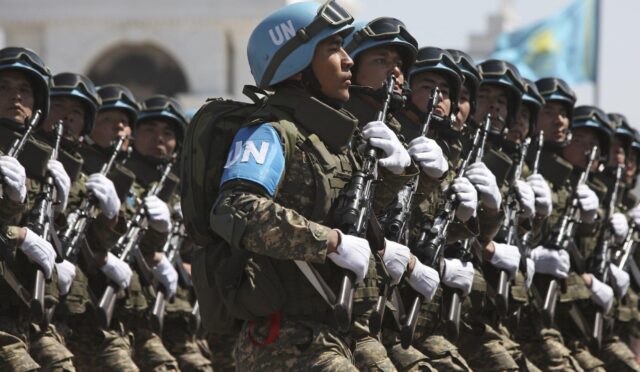Biden’s $6 Billion Military Aid for Ukraine
On Monday, the United States announced a substantial military and budget aid package for Ukraine, totaling nearly $6 billion. This initiative comes as Washington races to extend assistance before Donald Trump steps back into the presidency next month. Trump’s impending return, marked by his critical stance on aid to Ukraine, has stirred fears regarding the future of American support at levels consistent with those seen during President Joe Biden’s tenure.
With Trump’s inauguration just three weeks away, time is of the essence for the distribution of billions in previously authorized aid. “Today, I am proud to announce nearly $2.5 billion in security assistance for Ukraine, as the Ukrainian people continue to defend their independence and freedom from Russian aggression,” Biden emphasized in a press release.
Details of the Aid Package
The comprehensive aid package consists of a $1.25 billion military “drawdown,” allowing the Pentagon to swiftly transfer weapons from U.S. stockpiles directly to Ukraine’s front lines. Additionally, $1.22 billion will be allocated through the Ukraine Security Assistance Initiative, which focuses on procuring military equipment from both the defense industry and allied nations. The U.S. State Department confirmed that this latest drawdown will include drones, ammunition for High Mobility Artillery Rocket Systems (HIMARS), guided missiles, anti-tank systems, and essential spare parts.
In conjunction with military support, the Treasury Department has earmarked $3.4 billion in direct budgetary assistance for Ukraine. Biden highlighted that his administration has successfully distributed all aid funds appropriated by Congress earlier this year, following extensive negotiations. He reiterated his commitment to ensuring that as much military aid as possible continues to flow to Ukraine, especially as the country grapples with territorial losses to invading Russian forces.
A Unified Front Against Russian Aggression
Biden, alongside Treasury Secretary Janet Yellen, remarked on the collaborative effort to strengthen Ukraine’s defense capabilities. Yellen noted, “Together with the security assistance America is providing Ukraine and the Treasury’s actions to further tighten sanctions on Russia’s war machine, we will continue to do everything in our power to position Ukraine to achieve a just peace.” This statement underscores the comprehensive strategy aimed at countering Russian military advancements.
As Ukraine braces for winter, Biden revealed that the Pentagon is actively supplying essential military resources, including artillery rounds, rockets, and armored vehicles. Secretary of State Antony Blinken reinforced this commitment, stating, “The United States and over 50 nations stand united to ensure Ukraine has the capabilities it needs to defend itself against Russia’s aggression.” This coalition reflects a global resolve to support Ukraine in its ongoing struggle.
Zelensky’s Call for Continued Support
Ukrainian President Volodymyr Zelensky responded positively to the timely aid, highlighting its significance amid escalating Russian attacks. He pointed out troubling developments, including reports of North Korean soldiers being involved and Russia acquiring additional weaponry from North Korea and Iran. Zelensky urged Kyiv’s Western allies to persist in bolstering Ukraine’s defenses, aiming for a resolution to the conflict by the end of next year.
In a social media post, Zelensky stated, “We must continue moving toward peace through strength to achieve our common goal of peace in 2025 — a goal shared by Ukraine and all its partners.” His comments reflect a determined push for international cooperation to enhance Ukraine’s military readiness while striving for a peaceful resolution.
Continuing Support Before Trump’s Inauguration
The recent U.S. aid package follows an earlier announcement of nearly $1 billion dedicated to drones, ammunition, and military equipment. The Biden administration is working diligently to maximize aid deliveries to Ukraine before Trump takes office on January 20. Trump’s history of praising Russian President Vladimir Putin and his claims of being able to resolve the conflict swiftly have raised apprehensions about the potential shifts in U.S. foreign policy.
Concerns have emerged that under Trump’s leadership, the United States may impose peace conditions dictated by Russia, undermining the support that Ukraine has relied upon. As the situation develops, the urgency for effective aid distribution remains a top priority for the Biden administration.







